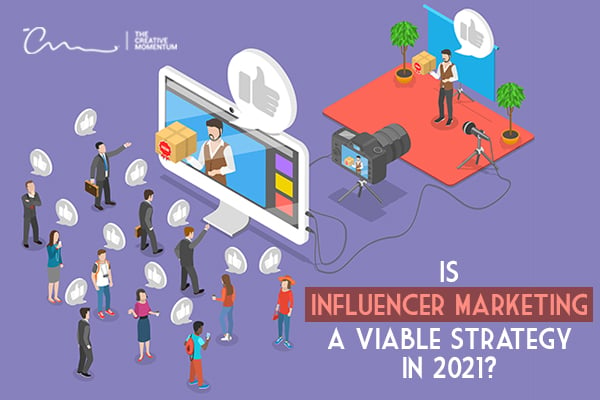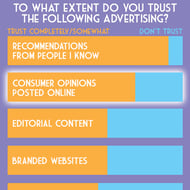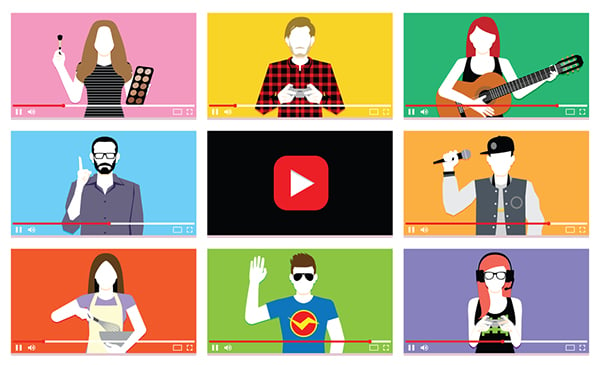
Social media introduced a powerful new way of marketing to consumers through influencers. Influencers may have earned themselves a bad rap over the years for shameless plugs and product promos, but it’s hard to argue with the numbers.
In 2019, the influencer marketing industry was worth about $8 billion. With nearly 80% of businesses using influencer marketing, the industry is expected to almost double and hit $15 billion by 2022.
But, as with all things, popular doesn’t always equal effective. So the question is: is influencer marketing still a viable strategy in 2021?
Let’s take a closer look at the current state of influencer marketing.
The Basics of Influencer Marketing
The idea behind influencer marketing isn’t complicated. Find someone with a large fanbase and partner with him or her to promote your products or services. These influencers are typically experts in a specific niche or celebrities with massive followings.
Most influencer marketing is done on social media. When you partner with influencers who have a million followers on Instagram (the leading platform for influencer marketing), they will expose all of their followers to your products. It’s a great way to promote your brand to a wider audience and capitalize on the expertise and credibility of industry experts.
Why It Works
 Nobody trusts advertisements anymore. Yes, the product looks great; they’re trying to sell it! When an admired person promotes a product or service, consumers are more likely to be receptive to his or her suggestions. However, 92% of consumers believe suggestions from people they trust.
Nobody trusts advertisements anymore. Yes, the product looks great; they’re trying to sell it! When an admired person promotes a product or service, consumers are more likely to be receptive to his or her suggestions. However, 92% of consumers believe suggestions from people they trust.
Influencer marketing capitalizes on the power of word-of-mouth marketing by using celebrities and online personalities whom social media users know, admire, and trust.
2020 Influencer Marketing Forecast
Influencer marketing growth is directly related to the popularity of social media. The more prominent social media becomes, the more power influencers hold. The year 2020 set a new record for social media users. Officially, more than half of the entire world population (about 4 billion people) now uses social media.
In just the last year alone, the number of social media users grew by 10.5%—about 375 million people—and show no signs of stopping.
This growing popularity encourages more marketing professionals to consider influencer marketing as a viable strategy. In 2019, 90% of marketers used influencers as a part of their overall strategy, and 65% of those using influencer marketing plan to increase their influencer budgets in the future.
If social media trends continue, influencer marketing is worth considering in 2021 and beyond, as long as you keep up with the latest internet trends.
The Latest Influencer Marketing Trends
Although influencer marketing doesn’t seem to be going away, internet trends change at the drop of a hat. When social media influencers first emerged, it was all about major celebrities with millions and millions of followers pushing products they didn’t care about or use. Back then, it worked.
Today’s consumers are smarter to the ways of marketers. If something doesn’t seem authentic, they won’t engage. This change has prompted a major shift in the influencer marketing industry from quantity to quality. Here are three trends defining the future of influencer marketing:
1. Micro Influencers
Not all influencers are created equal. In the past, mega influencers (over 1 million followers) were the most desired. Influencer marketing was all about reach: quantity over quality. While they might have the reach, mega influencers lack substance. They don’t necessarily care about or use the products they promote, making their promotions no different than paying for a celebrity endorsement.
Today, that’s changing. Micro and nano influencers (those with under 40,000 followers) are becoming the most sought-after influencers. Smaller influencers curate a more authentic and personal relationship with their followers, and thus, increases trust in the products they choose to promote.
Studies have shown that as reach increases, engagement decreases:
- 10,000+ followers: 3.6% engagement
- 5,000-10,000 followers: 6.3% engagement
- 1,000-5,000 followers: 8.8% engagement
Modern influencer marketing experts know that reach isn’t the most important part of marketing. If a million people are aware of your product but only two people convert to sales, is it worth it?
Micro and nano influencers offer more bang per marketing buck, and all signs point to them as the future.
 2. Long-Term Partnerships with Brands
2. Long-Term Partnerships with Brands
Many marketing professionals treat influencer marketing like paid advertisements. Give an influencer some money, they promote your product, and you both go your separate ways.
Consumers easily see through this strategy. It’s impersonal and obvious that the celebrity influencers don’t actually care about the product. They just talk about it once, and it’s forgotten.
In 2020, there’s been a clear shift away from these one-off promotions to foster long-term relationships. More and more brands are starting to run months-long campaigns (if not longer) with the same influencer to build credibility with the audience. If consumers see the influencer using the same brand time and time again, they’re more likely to engage. It’s more authentic and doesn’t seem like a pushy advertisement that drives people away.
3. The Move to Short Video Content
Video has always been popular for marketing purposes, and trends show that it will continue to gain popularity. Studies show that 54% of consumers want to see more videos from brands and businesses they support, and video consistently ranks as the favorite type of content on social media.
Video content is dominating influencer marketing, but short video is rising to the top. People don’t want to sit around and watch long ones anymore. They want quick, bite-sized packets of information they can watch as they scroll through their newsfeeds.
This trend is easy to see with the success of new platforms like TikTok, which are dedicated to short-format videos. TikTok launched in 2016 and has generated over 689 million active monthly users in just four short years—surpassing both Snapchat and Twitter!
The best length for a video will depend on the social media platform. For instance, Instagram videos are generally under 30 seconds, but YouTube users won’t hesitate to watch a longer four-minute video. In general, keep videos around the two-minute mark, and the shorter, the better.
Is Influencer Marketing Worth Investment in 2021?
Absolutely. If social media trends continue upward as the data suggests, influencer marketing is alive, well, and growing.
Influencer marketing in 2021 isn’t like the influencer marketing of the past. Consumers today care about quality more than anything else. The celebrity influencer is a dying breed, paving the way for more relatable and engaging micro and nano influencers. Build lasting relationships with your influencers and create the types of content your audience wants to consume.



